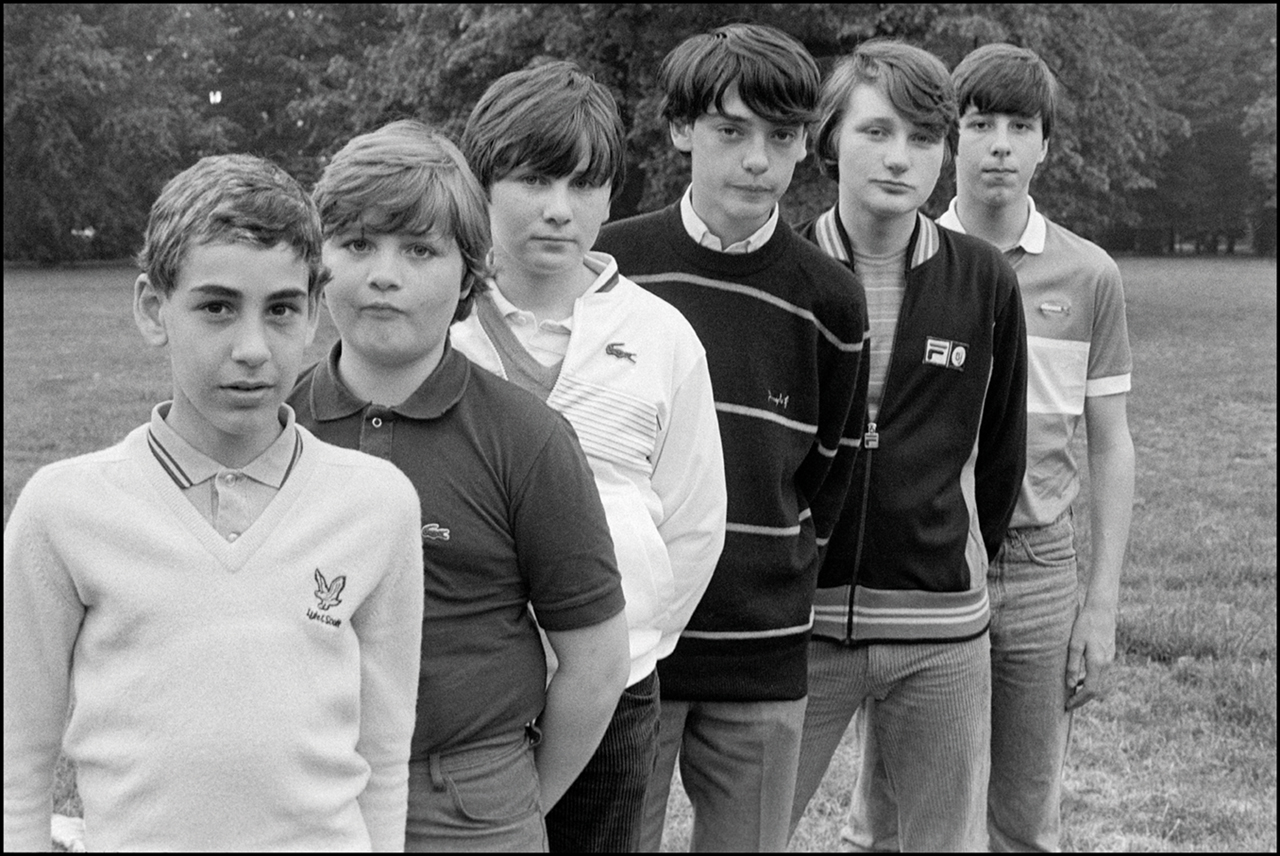Casual acquaintance
Before the 1980s trainers and tracksuits were worn only to play sports. But a new exhibition in Liverpool demonstrates how football culture transformed the way we dress
The transformation 1980s football casuals brought upon mainstream fashion is undeniable. Prior to hordes of young men traversing the country each weekend in multicoloured trainers, tracksuit tops and tennis gear four decades ago, sportswear was worn for sport. This entire subculture and its influence is now set to be explored in the Art of the Terraces exhibition at Liverpool’s Walker Art Gallery.
“Young people today may find this hard to believe but in the mid-1970s tracksuits were just what their name implies – garments worn for actually warming up on the athletics track – and they were not seen on the streets,” says lead curator Pauline Rushton. “Similarly, trainers were only worn for playing sport of some kind and the massive choice we have today was non-existent.”
Dave Hewitson, a Liverpool FC season ticket holder since 1978, lived through these times, following his team across Europe over the decades. Since 2003 he’s run the clothing brand 80s Casuals and worked with Rushton – alongside artists Adam Gill, Peter O’Toole and Jens Wagner – on the forthcoming show.
“We wanted the exhibition to be about the clothes, about the fashion, but also about the art which is influenced by that entire original movement. The first piece of art I know of that was inspired by football casuals was a short film, Fiorucci Made Me Hardcore, by Mark Leckey in 1999. Then I found out he’s from Birkenhead, calls himself a casual, went to matches – and he went on to win the Turner Prize.”
Work by Leckey will be displayed in the exhibition, plus art from Mark Wallinger, Dave White, Lucy McKenzie, Ross Muir and Pete McKee. There’s a strong Pop Art influence on many of the pieces, with their bold use of colour and comic book inspirations.
“This reflects the fact that several of the artists started their careers as cartoonists and some of the paintings, by contributors such as Jens Wagner, show influence from the world of advertising, recalling the work of artists such as Roy Lichtenstein,” says Rushton. “But they are not examples of direct copying – rather a fresh imagining of the approach inspired by the casuals subculture and also commenting on today’s popular culture more widely.”
Also at the Walker will be examples of the clothing and trainers that shaped the era. Pre-internet, fans would go to extraordinary lengths to source new, rare and desirable items.
“When Liverpool were playing in Europe the fans were bringing back and wearing stuff that you just couldn’t get here,” says Hewitson. “Then the younger fans would want them so soon older lads were coming back from the continent with a few tracksuits and a few pairs of trainers to sell, covering the cost of their trips.
“People were paying a week’s wages for a pair of Adidas Grand Slams. Maybe we’ve got a lot to answer for now you’ve got six-year-old kids asking for designer clothes.”
Rushton hopes this exhibition will have a broad appeal. “We want to show art is for everyone and that art drawn from popular culture and youth subcultures is as important and influential on society as what we regard as mainstream art.”
Art of the Terraces is at Walker Art Gallery Liverpool until 12 March 2023
Photo: Young casuals in Wanstead, Essex. Older football fans would sell them clobber they had bought while on away trips on the continent (David Corio)

Leave a reply
Your email address will not be published.